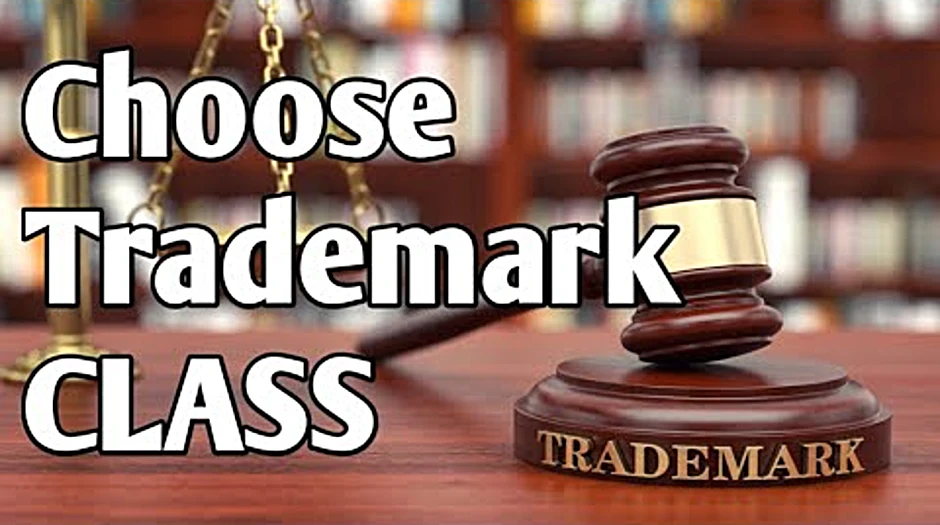Trademark class for kurtis [With Tutorial]
Table of Contents
- What is a Class 35 trademark?
- What is trademark class 39?
- What is trademark class 19?
- When was trademark invented?
- What is trademark class 32?
- Can you patent rum?
- What is trademark class 26?
- What is trademark class 22?
- What is trademark class 28?
- What is a Class 41 trademark?
- What is class 20 in trademark?
- What is a Class 4 trademark?
- What is trademark class 11?
- What is a Class 37 trademark?
- What is a Class 33 trademark?
- What is trademark class 40?
- What is class 25 in trademark?
- What is a Class 1 trademark?
- What is trademark class 9?
- What is trademark class 44?
Last updated : Aug 24, 2022
Written by : Brett Slisz |
Current |
Write a comment |
What is a Class 35 trademark?
Trademark Class 35 is a service category that includes a range of business and professional services. Most of the included services help with carrying out, managing, or advertising a commercial or industrial enterprise.
What is a Class 4 trademark?
Class 4 includes both liquid fuels, such as gasoline and alcohols, and solid fuels, such as coal. Most common illuminants fall under this class. Call Us: (804) 477-1720.
What is a Class 37 trademark?
Class 37 includes mainly services rendered by contractors or subcontractors in the construction or improvement of buildings, as well as services rendered by persons engaged in the restoration of objects to their original condition (without altering their physical or chemical properties).
What is a Class 33 trademark?
Trademark Class 33 protects the branding of businesses that create and sell alcoholic beverages such as wine, liquor, and various types of mixed drinks.
What is trademark class 40?
CLASS 40 (Treatment of materials) Treatment of materials. Class 40 includes mainly services not included in other classes, rendered by the mechanical or chemical processing, transformation or production of objects or inorganic or organic substances, including custom manufacturing services.
What is class 25 in trademark?
Trademark Class 25 pertains to clothing, footwear, headgear. The following goods must NOT be classified under Class 25: Certain clothing and footwear for special use.
What is a Class 1 trademark?
Trademark Class 1 is for registering a trademark for chemical products used in science, industry and agriculture. It also includes those that go into the making of products belonging to other classes. Class 1 mainly includes pharmaceuticals and other preparations for medical or veterinary purposes.
What is trademark class 9?
Trademark Class 9 pertains scientific, nautical, surveying, photographic, cinematographic, optical, weighing, measuring, signalling, checking (supervision), life-saving and teaching apparatus and instruments; apparatus and instruments for conducting, switching, transforming, accumulating, regulating or controlling ...
What is trademark class 44?
Class 44, a very broad category, includes medical care, hygienic products, and beauty care products for both humans and animals. It also includes certain services relating to the fields of agriculture, horticulture, and forestry.
What is trademark class 39?
Therefore, Trademark Class 39 includes services for the transport of people, animals or goods from one place to another (by rail, road, water, air or pipeline) and services necessarily connected with such transport, as well as services relating to the storing of goods in a warehouse or other building for their ...
What is trademark class 19?
Trademark Class 19 includes primarily non-metal building materials. It also includes some pipes, stone work, wooden materials, structures, structure components, signs, glass, pavement materials, and some other related goods. It's important to remember that most of these materials do not contain metal.
When was trademark invented?
United States: there are at least two claims: A design mark with an eagle and a ribbon and the words "Economical, Beautiful, and Durable" was the first registered trademark, filed by the Averill Chemical Paint Company on 30 August 1870 under the Trademark Act of 1870.
What is trademark class 32?
Trademark Class 32 includes beers; mineral and aerated waters and other non-alcoholic beverages; fruit beverages and fruit juices; and syrups and other preparations for making beverages. For more information about trademarks and federal registration, see Nolo's articles on Trademark.
Can you patent rum?
According to the United States Patent and Trademark Office (USPTO), it is possible to apply for a utility patent for “any new and useful process, article of manufacture or composition of matter.†If you have invented a completely new drink, especially one that relies on a new mixology technique or unique ingredients, ...
What is trademark class 26?
What is a Class 26 Trademark? Trademark Class 26 primarily includes textile and sewing goods, as well as other artificial accessories and decorative pieces. A good way to classify these goods is by thinking about items used for “finishing†an outfit or piece of clothing.
What is trademark class 22?
Trademark Class 22 covers textiles including ropes, materials for ship and boat building, padding materials, cushioning and stuffing materials, raw fibrous materials, other textiles, and some other miscellaneous items.
What is trademark class 28?
Class 28 is a broad one, including games, playthings, gymnastic and sporting articles (like baseball gloves), decorations for Christmas trees, amusements, game, and fishing apparatuses. For a complete listing of all goods in Class 28, see below.
What is a Class 41 trademark?
Class 41 includes services for education, tutoring, training, entertainment, and various sporting and cultural activities. Class 41 covers mainly services rendered by persons or institutions to educate persons or train animals, as well as services intended to entertain.
What is class 20 in trademark?
Trademark Class 20 pertains to furniture, mirrors, picture frames; goods (not included in other classes) of wood, cork, reed, cane, wicker, horn, bone, ivory, whalebone, shell, amber, mother-of-pearl, meerschaum and substitutes for all these materials, or of plastics.
What is trademark class 11?
Trademark Class 11 pertains to apparatus for lighting, heating, steam generating, cooking, refrigerating, drying, ventilating, water supply and sanitary purposes.

Check these related keywords for more interesting articles :
Can you trademark a picture
How to copyright my childrens book
Register trademark with state
What does trademark details mean
Trademark and service difference
How to copyright a band name for free
How to find the owner of a patent
Is trademark service mark
Trademark description search
Can you use an abandoned trademark
Intellectual property uk search
Trade description in trademark registration example
Geographically descriptive trademark supplemental register
How to spell patent plural
How to register trademark in the uk
Did you find this article relevant to what you were looking for?
Write a comment
Comment by Ute Chovanec
Thanks for this great article
Thanks for your comment Ute Chovanec, have a nice day.
- Brett Slisz, Staff Member
Comment by Vesta
trademark classes now we should talk a little bit about the classes of goods and services that you can file a trademark in when you file a trademark application one of the first things we do when working with clients on their trademark application is understanding what goods or services they are offering the reason this is important is because the rights you receive in a trademark are limited to the specific goods or services you offer in other words the list of the goods and services is an important aspect of the trademark application as the scope of the applicant's rights in the trademark is defined and limited by the scope of the classes that you list in your application this list is also known as the specification what this means to you in practical terms is that when you're filing your trademark application we have to select different categories called classes of goods and services for the trademark essentially every good and services known to mankind has been divided into forty five different classes by the International classification system established by the nice agreement concerning the International classification of goods and services for the purposes of registration of marks an international treaty consummated on the 15th of June 1957 in Nice France the nice agreement is open to states who are parties to the Paris Convention for the protection of industrial property in total the nice classification system contains around 10,000 indications of goods and 1,000 indications of services the advantage of having classes is that you can have very similar even identical trademarks in different industries which do not result in the end-user being confused for example you have Dove chocolate and Dove soap you've got Delta Airlines and Delta faucets and there's a lot of other Delta's out there as well the reason these trademarks can coexist is because there are vastly different markets if I'm in the market to buy a body soap I'm not going to confuse that with the name of a chocolate maker now there are always exceptions every rule but in general the rule is that if a trademark is in a different line of business or a different channel trait even if it's identical to a pre-existing trademark they can co-exist an obvious exception would be trademarks that are defined for the Paris Convention to have become well-known like Nike or coca-cola you can't go make coca-cola soap without confusing and users as everybody knows coca-cola it's just not gonna happen the classes are number 1 through 45 classes 1 to 34 related Goods and classes 35 to 45 relate to services now let's say you're selling clothing sunglasses in purses those actually fall into three different categories clothing is class 25 purses would be class 18 and sunglasses in class 9 the significance to you is that the trademark offices filing fees are computed based on how many classes and you are filing now some countries allow you a single fee for up to three classes others charge by class and the final filing costs will be multiplied by as many classes as you're trying to register so if filing one trade back in one class costs two hundred and forty dollars now you will be paying seven hundred and twenty dollars to file a trademark application in three separate classes now this is where small business owners have to be very careful about their strategy for registering a trademark and how many classes they actually want to include when filing a trademark as the cost can raise very quickly so at the end of the day we're trying to figure out what goods or services are we offering what are the applicable classes and then what strategy do we want to take do we have the budget to apply for classes that are only tangential and not really critical to our business or do we need to register in less classes to keep the cost within budget another important aspect of using classes is the ability to exclude classes when there is a conflict with another similar trademark when an examiner rejects your trademark because it is descriptive of its goods for services for example when you need to overcome an Chinn for an opposition based on the likelihood of confusion you can decide to exclude certain classes of goods and services that are similar to that of the similar trademark in order to overcome that objection an applicant may also restrict his specification nor to overcome an objection made under absolute grounds where the trademark is found to be descriptive by using restrictions and positive or negative terms such as alcoholic beverages consisting of vodka rum or alcoholic beverages none of which being whiskey or gin you may be able to overcome a refusal for an opposition citing an earlier trademark that already covers whiskey and gin beverages please feel free to watch more of our videos to get valuable insights but the mechanics of applying for trademark registrations defending your marks opposing other conflicting Mart's dealing with office actions and many other intellectual property issues my name is jonathan morton and i have a licensed US attorney and a member of the trade markers network don't forget to subscribe
Thanks Vesta your participation is very much appreciated
- Brett Slisz
About the author

Brett Slisz
I've studied sports medicine at Texas A&M University-Corpus Christi in Corpus Christi and I am an expert in humanism (outline). I usually feel quixotic. My previous job was vocational education instructors college I held this position for 3 years, I love talking about model racing and songwriting. Huge fan of Dua Lipa I practice speed skating and collect militaria.
Try Not to laugh !
Joke resides here...
Tags
What is trademark class 39
What is trademark class 19
When was trademark invented
What is trademark class 32
Can you patent rum
What is trademark class 26
What is trademark class 22
What is trademark class 28
What is a Class 41 trademark
What is class 20 in trademark
What is a Class 4 trademark
What is trademark class 11
What is a Class 37 trademark
What is a Class 33 trademark
What is trademark class 40
What is class 25 in trademark
What is a Class 1 trademark
What is trademark class 9
What is trademark class 44
 : 2582
: 2582

